Are you confused by the wilderness process? I’m confused. Do you wonder if it will ever be resolved in Utah? I wonder. Let’s start at the beginning.
Wilderness – the Wilderness Act of 1964 – Public Law 88-577
DEFINITION OF WILDERNESS
(c) A wilderness is … recognized as an area where the earth and its community of life are untrammeled by man, … man himself is a visitor … wilderness is further defined to mean … an area of undeveloped Federal land retaining its primeval character and influence, … protected and managed … to preserve its natural conditions and which (1) … appears to have been affected primarily by the forces of nature, with the imprint of man’s work substantially unnoticeable; (2) has outstanding opportunities for solitude or a primitive and unconfined type of recreation; (3) has … five thousand acres of land … in an unimpaired condition; and (4) may also contain ecological, geological, or other features of scientific, educational, scenic, or historical value.
It seems simple enough, unless you are a politician/attorney by profession—politicians/attorneys are trained (and highly paid) to complicate human language. This Act was passed by Congress in 1964. Nearly 50 years ago. Great national foresight. Honorable intentions. And yet, in Utah, the designation of wilderness, and perhaps even more notably, the debate about what is wilderness, seems to be in a quandary, a quagmire if you will. Why?
One would expect that reasonable people and reasonable leaders and reasonable land managers should be able to resolve this. I even believe most right wing, God fearin’ county commissions and legislators in Utah are, though not necessarily in favor of, at least willing to acknowledge and accept some wilderness designations in their counties in Utah. I believe most of Utah’s congressional delegation is of the same mindset. Reasonable people are willing to seek and accept reasonable compromise and solution. Most people want this issue resolved so we can all move on to other burning issues, like what really happened to Everett Ruess, or whether Utah can really contend for a PAC-12 football championship.
The Observation
Before we can get down to resolving where and how much wilderness we will designate in Utah, it might be helpful to know just how many acres of potential wilderness there may be in the Beehive State! But that seems to be where the quandary comes in. We can’t decide on what “wilderness” is, much less how much of it we have. You would think a simple inventory for the stuff would be, well, simple.
Over the past 40 years (and don’t hold me to exact numbers here, it’s a relative comparison exercise,) the “inventories” have gone from 2.8, to 5, to 5.8, to 9.8 million acres of inventoried wilderness in Utah, based on whatever inventory you choose to think is correct (the government’s , the counties’, or the environmental groups’). These numbers are, in general, acres involving BLM managed lands, which total approximately 22 million acres of the 54 million total acres in the state. 9.8 million is a big chunk of 22 million.
Seems like the wilderness recipe from the statute is straightforward enough—it must be a minimum of 5,000 acres, doesn’t show human imprint, and has opportunities for solitude and primitive recreation. The size requirement is the easiest one. Human imprint is a bit more difficult, particularly out on the Colorado Plateau. A road that was pioneered 50 years ago to some old uranium mine prospect and then not used can get pretty well “reclaimed” on its own. So it may have had past imprints, but give it another generation or two and they’ll be gone.
The more problematic requirement is opportunities for solitude and primitive recreation. That one gets down to a value judgment. I suspect that if you grew up in and/or live in jam-packed urban paradise, you and I will likely have quite a bit different idea of what constitutes primitive and unconfined recreation! As an official member of the old codgers club, I personally think wilderness should mean it ought to be damn big. And that you can’t have a GPS or cell phone when you are in it. If you get lost or injured you’re on your own, no search, no rescue. You are not necessarily at the top of the food chain. And the land being pretty don’t count for squat! It’s wilderness, meant to be remote, desolate, and unforgiving to a fool. Pretty’s just a bonus app.
Human value judgment issues being what they are, I’m going to suggest that what I’ve observed over the past decade or so is a propensity to keep adding potential wilderness acreage that I’ll call “pretty” places. Utah is full of “pretty” places. I find the Bookcliffs and Mancos shale desert to be “pretty”. (But hey, maybe I’ve just been out in the sun too long.) The flat valleys between the mountains in the Great Basin section of Utah are “pretty”, and one can indeed find solitude in the Great Basin.
The problem is that “pretty” is not a term used in the Wilderness Act. Pretty has nothing to do with it. other than confusing the human value judgement part of the equation.
Let’s now discuss how I’ve come to the conclusion that “pretty” has come into play as what wilderness ought to be, and may be why the inventory list just keeps growing—because I’m pretty sure we aren’t “growing” any new wilderness areas.
Exhibit #1
Toward the end of my time at BLM, I was involved with a large film project in Utah by the folks at Disney (of Mickey Mouse fame). A number of their proposed film locations were located in lands inventoried and proposed by the Southern Utah Wilderness Alliance (SUWA) as being eligible for wilderness designation under the much ballyhooed “America’s Red Rock Wilderness Act (ARRWA)” wilderness proposal. ARRWA hs been introduced by a number of Congressmen every year in Congress, and immediately tabled by other Congressman. It never reaches the floor for debate, but that’s another story.
We arranged field trips to these areas with the SUWA folks to discuss the filming operations proposed and to see if there were ways that Disney could mitigate, eliminate, or reduce filming impacts to these areas, such that the filming activity would be acceptable to SUWA.
One of the areas was in western Utah, a film site west of Delta, Utah in the Tule Valley. About mid-February of 2010 we met there with some SUWA folks to look at the site. The weather was clear, there was minimal snow and we all arrived at the destination. We turned south off highways 50 and 6 and proceeded along the gravel road a couple of miles until we arrived at the proposed site of the movie set, on and adjacent to a flat, playa lake bed. The movie people wanted to build a small set on a small island in the middle of the playa bed and film John Carter’s first days on Mars here. It damn sure looked like it could be Mars.
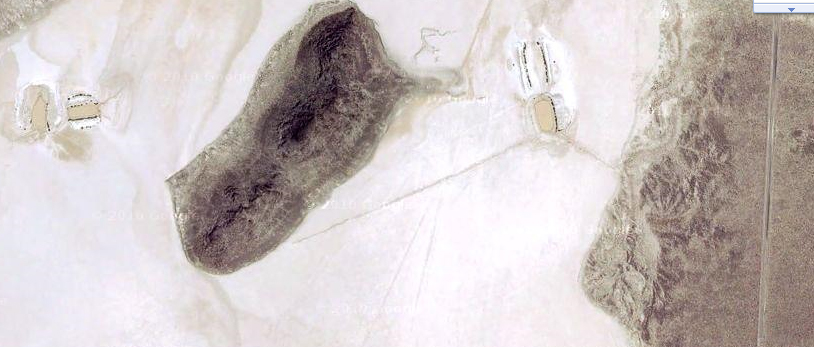
Running immediately adjacent to the playa lake bed on the east was a major, graveled county road, traveling south into the hinterlands, past some sort of small strip mine about 1/2 mile away from the playa lake bed. The playa lake bed was used intensively in the dry months by ATV enthusiasts. Apparently it was also used in the early spring by a hobby group of airplane aficionados who literally landed their planes on the lake bed and camped overnight. Nobody was using at present cause it was a wet, muddy quagmire.
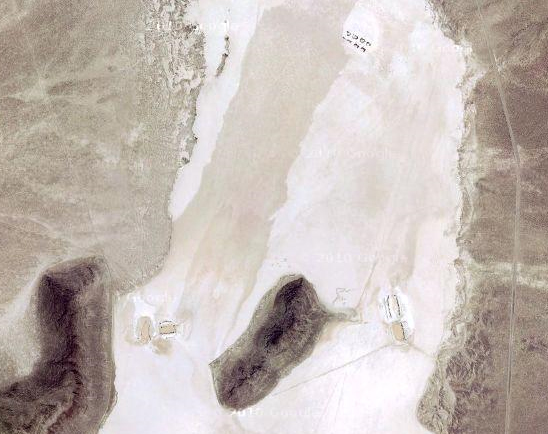
We got out to look around, kick a few dirt clods if you will. SUWA got out “their” maps and, sure enough, their proposed Red Rock wilderness areas were on both sides of the graveled county road. Came right up to the edge. It included the playa lake bed ATV play area and even included the strip mine located on a state parcel there, along with a water well and long water trough just south of the playa lake bed.
I scratched my head. “Wilderness?” How can this be wilderness? There’s a strip mine, and livestock developments, and graveled 50 mph roads, and a major east-west highway on the north side of this area.
One of the folks from SUWA just looked at me and responded, “Look how pretty it is!” What? I genially agreed that it was “pretty,” but that I was unaware that “pretty” was one of the criteria for wilderness. How could this possibly be wilderness, I asked, when the imprint of man was everywhere I looked?
No answer—just benevolent gazing to the distant horizons out across this “pretty” landscape.
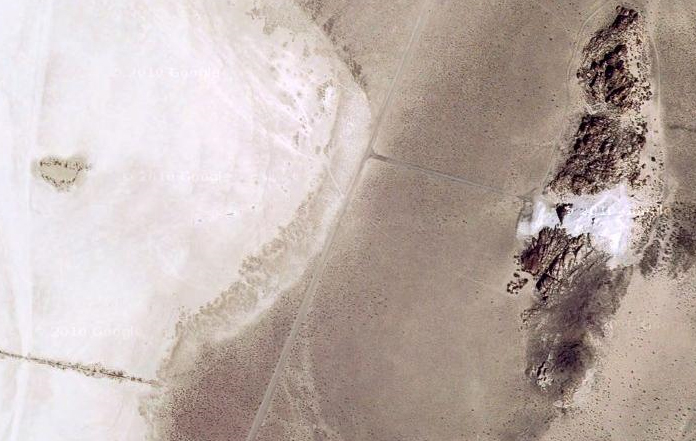
Google Earth has views and photos of this area. Go to Google Earth and query: Tule Valley Hardpan, Garrison-Sevier Lake, UT. Zoom into the area from above and you’ll note some great photo points which can be clicked on, and interestingly, a 3-D panoramic view of the area from the top of the strip mine. The 3-D view is labeled as the Ibex hardpan. Check out the graveled county road. Then go to the SUWA website. Go to the statewide wilderness map. Click on the wilderness areas of the Great Basin wilderness proposals. Read the general description for this areas wilderness characteristics:“Encompassing each of these unique islands of ecology is more than salt flats and sand: there are stark places like Tule Valley, one of the few basins between the mountains that is still roadless”.
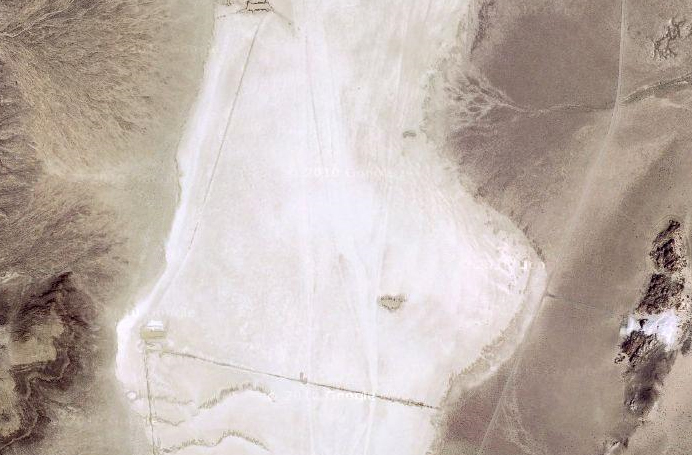
Huh? What? Roadless? What’s goin’ on here?
Exhibit # 2
I’ve recently seen several engaging, polished, 30 second video clips airing during commercials on the Utah news programs. You’ve probably seen them too. They are well done, I have to admit, and they should be— SUWA announced last spring it plans to spend $2 million on media advertising to sell wilderness to their fellow Utahns. So what’s my old curmudgeonly problem with them?
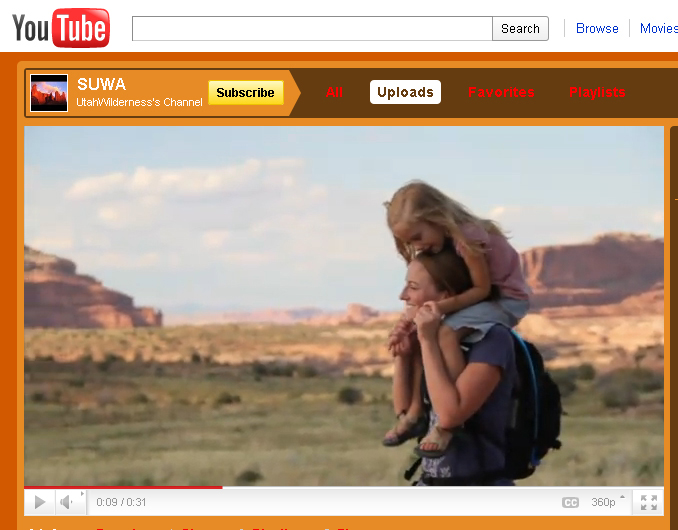
The young adults in the videos are dressed smartly, in their nicely attired Patagonia/REI day hiking cloths. No backpacks, no camping gear, tents or sleeping bags, no water bottles, no sweat stained, dirty shirts or bandannas.
We see lovely small children, lots of them, playing in a streambed or in the sand, or hiking in their cute little sandals holding hands with their many brothers and sisters (hmm, gotta wonder what demographic they are aiming for here.) In several of the scenes, mom and dad carry the little tykes on their shoulders, spinning oh-so-carefree in the wilderness, or in the background proudly admiring their little progenies as they frolic in Utah’s wonderful wilderness areas.
However, as I watched these catchy, eye-popping vignettes I noticed something peculiar. I’ve hiked and traveled all over this state for 40 years, I know the terrain around Moab in particular like the back of my head (as my grandson Rylan points out to me). What I noticed was that these vignettes seem to be filmed from adjacent to public highways and roads, or taken just upstream from major roads in the Moab area.
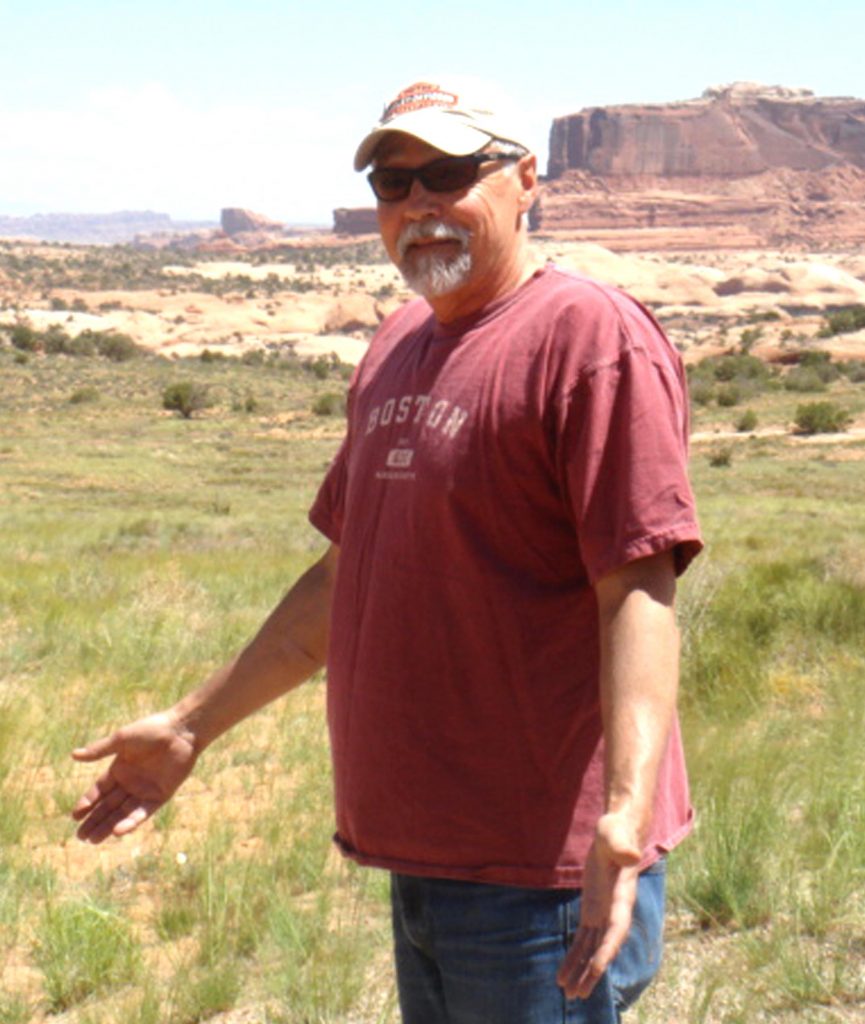
One of the scenes was clearly filmed adjacent to the paved road leading to Deadhorse Point State Park, since I can see one of the Monitor and Merrimac Buttes right there in the background! In fact, if you’ll look at the pictures here in the article, one was taken from approximately the same vantage point as shown in the video, and a second one from the other side of the highway, with the same vantage point! Wilderness? No. Pretty? Damn straight.
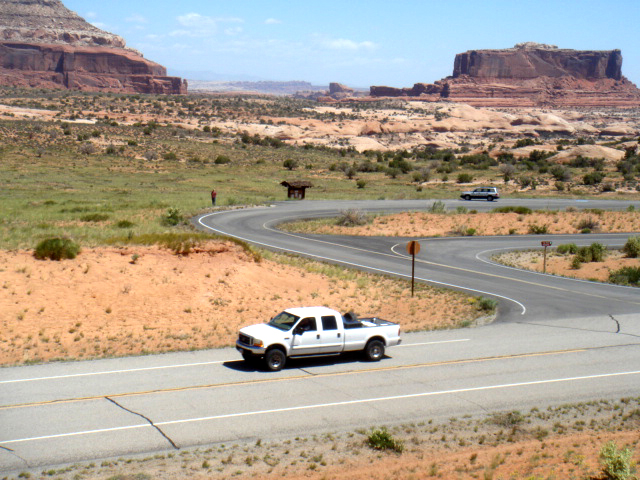
What in the world is going on here?
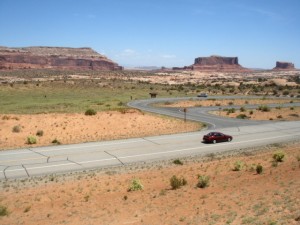
Well, I’ll tell you folks, someone wants you to believe this is wilderness! You’re being tricked, because they know most of you won’t notice the difference. Who doesn’t like “pretty”? Who doesn’t like piles of cute small children? Who doesn’t think this should be protected as wilderness before the “evil-doers” destroy it, bulldozers at full throttle?
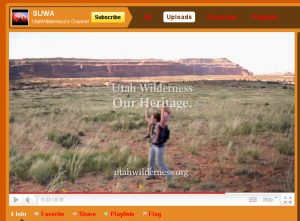
I suppose it’s appealing to the great urban population of Utah, stuck as they are in a mire of smog and overcrowding. But I have to chuckle at the pure silliness I see in the video. I guess because I’ve been in real wilderness, and I’ve been to a lot of the places bring shown in the videos. Look closely at the pictures shown. This is not wilderness. It’s just pretty.
The Bottom Line As I Sees It
I like pretty landscapes. I think we actually have many great wilderness areas in Utah that should be designated as such by Congress. But I don’t see us getting any closer to that day. In fact I see us getting further and further from ever resolving the issue. I see mass confusion being generated.
I see trickery going on, under the emotional umbrella of needing to designate wilderness to protect “pretty” places from the “imminent” destruction they might face otherwise. I see twisting and contorting the actual legal requirements and definition of wilderness to people who have other things to do for a living and don’t have the time to become “public law savvy”
In effect, they are attempting to convince the general population that “pretty” = “wilderness”!
I believe in protecting unique landscapes, wild landscapes, and yes, sometimes “pretty” landscapes. Not all areas have to be or should be developed or utilized by motorized recreationists or commodity developers.
What bunches my shorts up however is the subterfuge being used here. There aren’t 9.8 million acres of “wilderness” on public lands in Utah as established by the criteria established by the Wilderness Act, almost 50 years ago. If groups want to protect 9.8 million acres of public land in Utah, then they should be honest about what they want to do.
* Quit focusing on the manipulation of public opinion and stick with facts and legal definitions.
* Quit trying to demand that all “pretty” places should be designated wilderness. There are several other ways to protect land without without using smoke and mirrors to confound the whole the whole philosophical and legal concept of wilderness. It can be designated as natural areas, national monuments, areas of critical environmental concern. BLM can and has, through the RMP process, closed roads into areas, withdrawn lands from mining claim locations, and decided not to issue oil and gas leases in some areas. Designate wilderness where it’s wilderness, by God! Protect the rest if you will in some other fashion.
I suppose I’ll be eviscerated by some environmentalists and others of similar ideological inclinations. They’ll claim they are simply using the “tools” available to them. They’ll claim they have to use these tactics to counterattack the dirty tactics used by the other side, the evil-doers and pillagers of the earth. They’ll suggest that too many years at BLM ate whatever few brain cells I may have once had. They’ll say they would expect no less from someone who spent a career at the Bureau of Livestock and Mining. They’ll say I clearly don’t see the big picture! They’ll say I don’t want to save the earth. They’ll probably even say my mother wears combat boots (I told you, I have a few rings around my waist).
What they won’t say however is this: that they’re using the emotional romance of wilderness to push an agenda of public land closures to all but hikers and backpackers. They won’t say that they are manipulating and misusing the legal system to accomplish their goals. They won’t say they will utilize all manner of press and news media to purposely spread misinformation (otherwise called hooey).
The Message
I’m not really a neophyte or a Pollyanna (I don’t think?). I was in public land management in southeast Utah for 32 years. I know there are politics involved in public land management. I know part of politics is manipulating legal definitions, the media and public opinion. I don’t think that wilderness in Utah is the only place such things happen. In fact, it’s rampant in our society. None of us know what to believe anymore. The truth, as Fox Mulder used to say, is out there. But it requires effort and diligence to find it.
So seek the truth about wilderness before you decide. Don’t believe all the hype being put out there by either side. The best way to resolve the wilderness situation in Utah is through fully-educated public citizens, politicians, leaders and special interest groups, dealing in actual facts and actual legal definitions.
Hmm, maybe I am a Pollyanna.
Lynn Jackson lives in Moab, Utah.

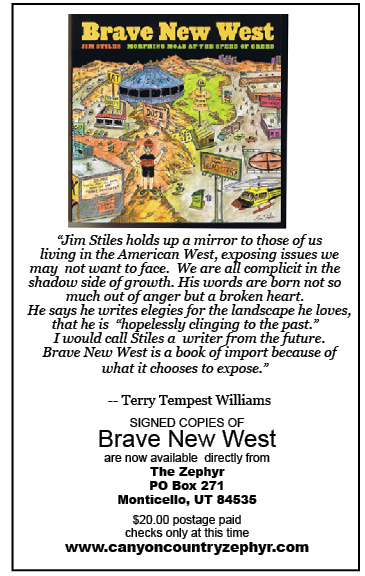


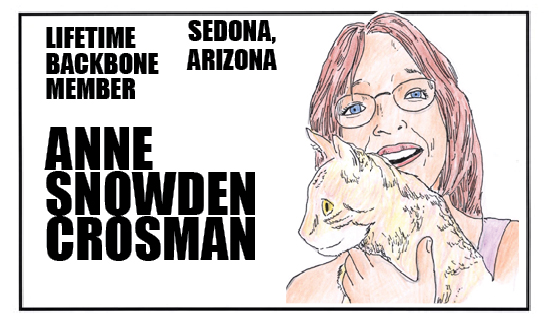
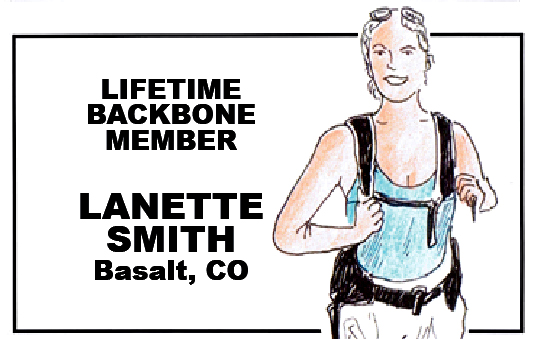
Good for Lynn Jackson! Finally, an learned, objective editorial on the great wilderness debate. SUWA is really no different than Big Oil in using whatever tactics they have available to confuse, contort and sway public opinion. They claim their intentions are pure… And they may well be; for a really small sliver of the population. How would you feel if some special interst group came forth and said: “we’d like to designate the nation’s freeway system as only open to those with high-performance sports cars. Everyone else can make do with the secondary roads.”. Hardly seems fair, does it? That’s exactly what SUWA and their ilk are doing.
Hey–Glad to see you’re still kicking up dust! Hi to you and your family. Kathryn Kemp
I was fortunate to have worked with Lynn for many years both as a State and a Grand County employee. You could always count on the unvarnished truth from Lynn. Glad to see you’re still raising hell out there, Lynn. Don’t let’em get away with this baloney!
We went through the last RMP procees and have the scars to prove it.
Lynn Jackson’s fact, analysis, and observations prove that these are the remarks of a professional. The use of carefully staged photos and video images by wilderness advocate groups is unethical and dishonest. The ends do NOT justify the means, no matter what the goal of SUWA and their well-heeled sponsors.
A program that is working is the systematic route inventory of key areas that the BLM is conducting in Wyoming. Teams of motorcycle riders with the appropriate training and equipment survey every route and motorized feature in the area designated for study, recording ground observations and geo-tagged photos that are then used by the agency to make a determination of wilderness characteristics.
This scientific approach should be applied to every area under consideration, and it requires funding to accomplish. No area should be selected for wilderness study or designation without this level of professional observation being completed. Just as it is a stretch of the imagination to believe even a tiny fraction of the claims of wilderness advocate groups, it is folly to ignore that carefully designed protocols will resolve virtually all conflicts in this area. The credibility of the agencies increases as the land is surveyed and recorded, and it will result in the appropriate areas being designated as wilderness and others used for the resources they contain – which most of the time is grazing, water control, and recreation. The myth of the bulldozer despoiling the vast expanses of the American West are fairy tales invented by unscrupulous organizations seeking to eliminate all of the critical uses of public land. It is as easy as enabling the agency to perform efficient studies for the purpose of wilderness determination, not by popular fiat from fringe groups.
I absolutely love this article. Great job on more or less calling the bluff of both sides. RMPS and wilderness bills are a joke. I live in Washington County and was furious as were many here over the Land Use Bill. We did send our Old man Bennett on a hike after that one. Hope the state is successful on the law suits they just filed! http://kcsg.com/view/full_story/16431003/article-Utah-Sues-Federal-Government-Over-Roads-in-Garfiled-and-Kane-Counties?instance=home_first_stories
An interesting analysis, but it fails to tell the whole story. From a historical perspective the BLM has played and continues to play an obstructionist role in wilderness designation. There are good reasons why many of us think BLM stands for the Bureau of Livestock and Mining. Its also fair to say that if the spectacular lands in Utah were located in a politically less regressive state many more of them would now be protected as wilderness. Finally, its worth mentioning that many wilderness areas have livestock grazing in them. Try squaring that with the definition of wilderness found in the wilderness act itself and it becomes apparent how politicized and compromised the process of wilderness designation has become. The real problem is not SUWA, its the notion of human exceptionalism and the accompanying belief that we are entitled to do with the land whatever we wish.